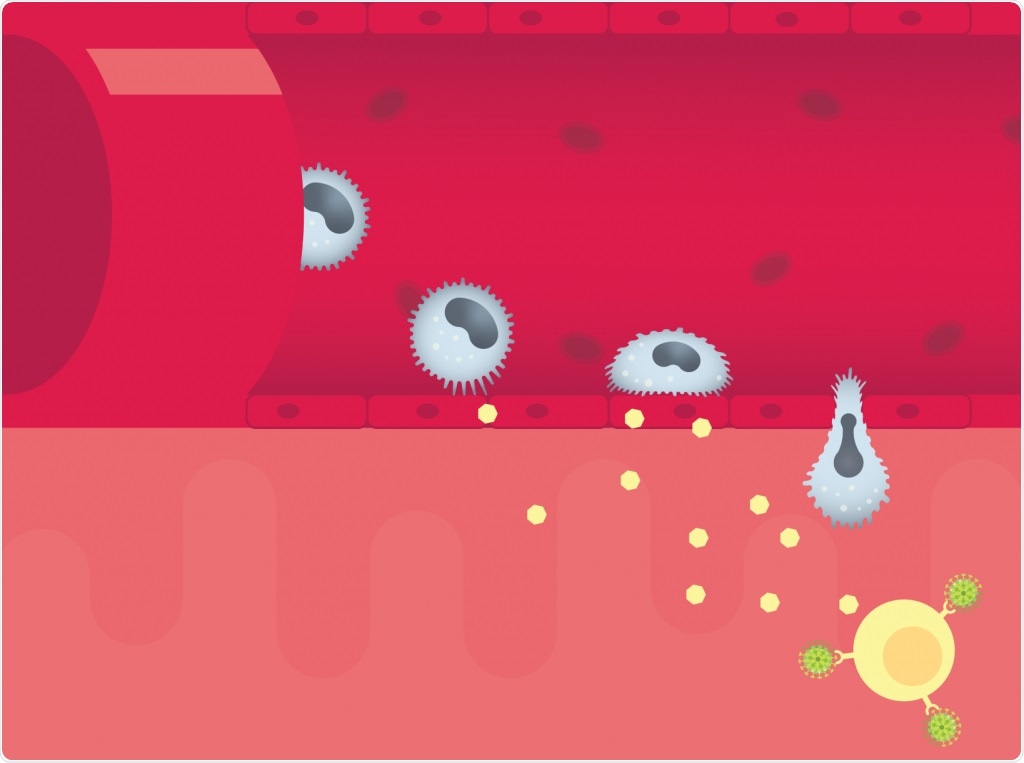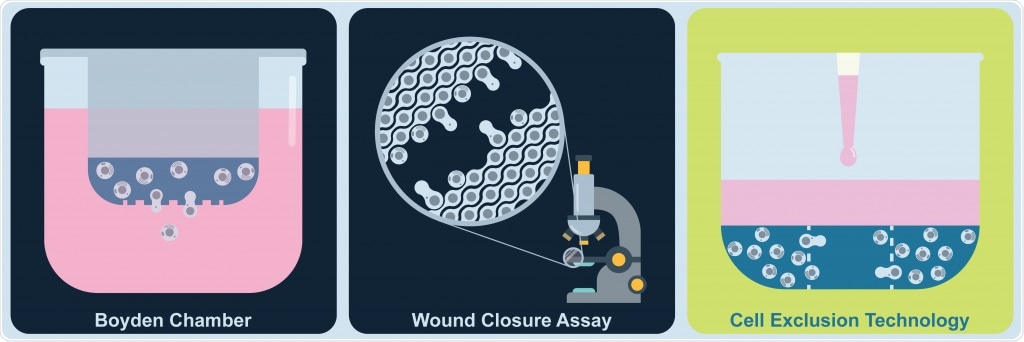Researching Cell Migration Assay Applications

In order to study a wide variety of biological processes, understanding cellular invasion and migration is crucial. Researchers can investigate processes as varied as wound healing and metastasis by observing the directed rate of movement of cells in response to mechanical or chemical signals.
This has been challenging in the past due to a lack of efficient and reproducible techniques for quantitatively assessing cell migration. Cell migration assays were developed to help researchers overcome this analytical hurdle, supplying the means for quantifying a wide range of cellular functions with accuracy.

A visual representation of cell migration. Image Credit: Platypus Technologies, LLC
Brief History of Cell Migration Assays
The Boyden chamber was one of the first cell migration assays developed for research applications. Also known as the transwell migration assay, the Boyden chamber had a cylindrical cell culture insert which was placed within the wells of a multi-well plate.
There was a permeable membrane of known volume and pore size within this insert. A serum, or chemoattractant, was loaded into the well beneath, while sample cells were seeded into a liquid medium in the insert.
The insert was removed after incubation, and the amount of cells in the serum could be quantified to provide an accurate understanding of cell migration characteristics.
This was a pioneering tool for studying a variety of biological processes, including haptotaxis, chemotaxis, and transmigration. Boyden chambers are still widely used in biological research today, even though restricted to analysis at a single time point and labor-intensive.
An alternative technique that is based on live-cell microscopy was created to provide better insights into specific processes associated with wound healing. The aptly-named wound closure assay is based on a manual optical microscope or a time-lapse microscopic camera and a confluent cell monolayer.

Image Credit: Platypus Technologies, LLC
A scratch is created in the monolayer and cell migration is quantified by recording the rate at which the wound heals at specific time intervals. This technique is based on subjective analysis and has low reproducibility, providing limited quantitative insights into cellular migration.
Cell exclusion migration is one of the most advanced cell migration assays for biomedical research applications. This technique is championed at Platypus Technologies in their OrisTM product range.
In terms of throughput, accuracy, reliability, and depth of information, it is superior to both transwell assaying and wound closure, having supplied a wealth of information for researchers in wound healing, drug discovery, and cancer research.
Cell Migration Assays from Platypus Technologies
Platypus Technologies provides a range of cell migration assays and other analytical systems for advanced biological research applications.

This information has been sourced, reviewed and adapted from materials provided by Platypus Technologies, LLC.
For more information on this source, please visit Platypus Technologies, LLC.
Source: Read Full Article




